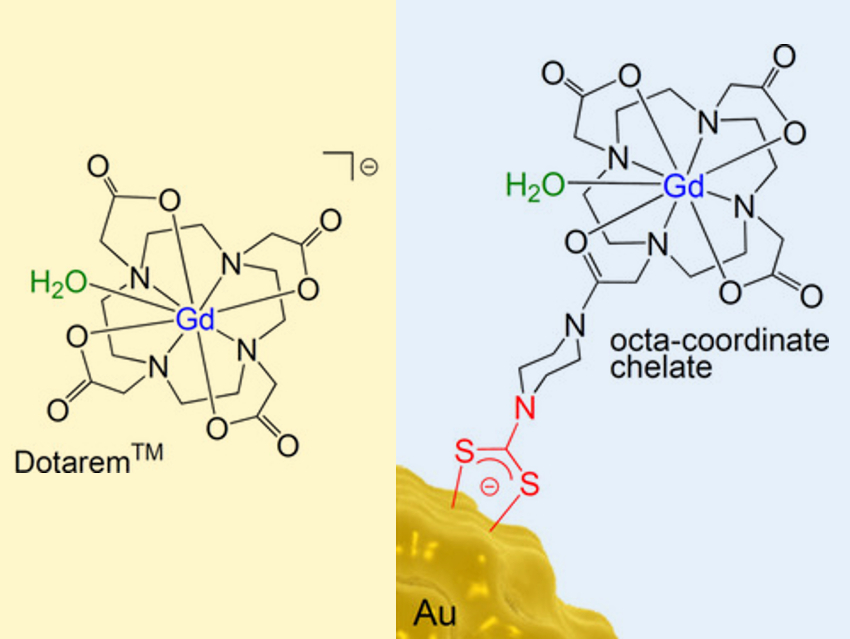Tethering gadolinium-containing compounds to larger structures, such as gold nanoparticles, improves their performance as magnetic resonance imaging (MRI) contrast agents by restricting their rotational freedom. Gd chelate complexes can, for example, be attached to gold nanoparticles using long, thiol-based linkers. However, the thiol–gold links can be lost under biological conditions and allow the Gd units rotational freedom, thereby reducing their performance.
James Wilton-Ely, Imperial College London, UK, and colleagues have tackled this problem by synthesizing a Gd chelate design based on a clinically-used MRI contrast agent (Dotarem™, pictured left). They modified Dotarem™ with a short, rigid, dithiocarbamate linker (pictured right). This linker restricts rotational motion and provides a robust attachment to the gold surface. This results in an eight-fold increase in contrast enhancement.
In addition to the contrast agent, the gold nanoparticles can be functionalized with a variety of other surface units to improve their biocompatibility, targeting, and cell uptake. The contrast agent modified with the gold nanoparticles described above provides much brighter images compared with Dotarem™ when using a clinical MRI scanner. This shows the potential of this design approach for the construction of improved nanoscale MRI contrast agents.
- Polyfunctionalised Nanoparticles Bearing Robust Gadolinium Surface Units for High Relaxivity Performance in MRI,
Nicolas G. Chabloz, Margot N. Wenzel, Hannah L. Perry, Il‐Chul Yoon, Susannah Molisso, Graeme J. Stasiuk, Daniel S. Elson, Anthony E. G. Cass, James D. E. T. Wilton‐Ely,
Chem. Eur. J. 2019.
https://doi.org/10.1002/chem.201901820




